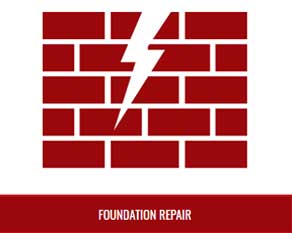Learn about the Drainage Systems in New Orleans, LA, Homes
New Orleans is home to some of the most unpredictable weather in LA. Although New Orleans, LA, is known for its heavy rainfall, which can cause significant flooding, much of the year is dry. Flooding in New Orleans, LA, is not a question of “if” but rather a matter of “when.” Major floods can occur anywhere and anytime, even in inland and coastal locations.
However, many New Orleanians don’t realize that flooding isn’t always caused by prolonged rainfall. More likely, water collects below the ground faster than the soil can drain. High water content for longer than 48 hours can cause clay soil beneath your foundation to become softened and swollen. The earth will become more fragile due to this swelling and softening, leading to foundation problems such as shifting or cracking.
Clay soil is more likely to retain water than drain it, so a proper drainage scheme will be your best chance of avoiding foundation damage from heavy rains. To design a drainage system, you must consider your property’s topography and soil texture.
Soil texture is the ratio of clay, silt, and sand in a particular soil. Clay-rich soils typically have between 20% to 40% clay and different amounts of sand or mud. Because soil texture indicates the soil’s behavior in wet and dry conditions, it is crucial.
Topography describes the landscape’s position, slope, roughness, and other factors that may affect natural soil drainage or erosion.
Call 504-858-1974 | Leading house leveling contractor in New Orleans, Louisiana. Ace House Leveling can level and repair slab houses, foundation repairs
When it comes to the drainage system that you can choose from, there are two main categories:
1. Surface Drainage Systems
Most surface drainage systems consist of multiple shallow ditches that will run off your foundation. This category includes:
a) Swale drainage – Swale drainages are wide ditches that have gentle slopes. These drains control rainwater flow and direct it to a final drainage point such as a dry well, sewer line, or another area of your property. Swale drains prevent water runoff from draining too quickly and keep storm drains safe from flooding from an unexpected influx of rainwater. You can also line your swale drainages with vegetation, gravel, or step stones to prevent flooding and soil erosion and avoid puddling.
b) Trench drains – Trench drains are a different type of drain than swale drains. They have a channel made of concrete and are covered with metal grates. Various widths and depths of trench drains are possible depending on how much rainwater they need to divert from your property.
c) Downspouts: The primary purpose of gutters or downspouts is to collect rainwater from your roof and redirect it away from your home. Downspouts should be at least 3 feet from sloped land foundations and 10 feet from flatlands, preventing water from pooling around the foundation and causing damage to your home.
2. Subsurface drainage Systems
Subsurface drainage, located beneath the earth’s surface, is used to drain any water below the ground. The following types of drainage are available:
a) French drains A French Drain is a perforated pipe. It is placed in a sloped trench around the foundation and filled with gravel. The tube collects the surface and groundwater and moves it to a lower point. Usually, it goes into a drain, dry well, or another draining method.
b) French drains and weeping tiles – While many assume they are the same, they are pretty different. Weeping tile systems are other than French drains in their output and placement. Weeping tile systems, unlike French drains, are installed more profoundly in the ground. They collect groundwater and then direct it to a sump pit. This system can protect your home from water damage and hydrostatic pressure, which is more profound than a French drain.
Your foundation and home may sustain significant water damage if there is no drainage system or the system is not adequately designed or installed. This could lead to costly and time-consuming repairs. Hiring a professional who can create a drainage system to protect your New Orleans, LA, home is best. After determining the best type of drainage for your property, the professional will design a drain with the right size, spacing, layout, and material to suit your unique characteristics.


